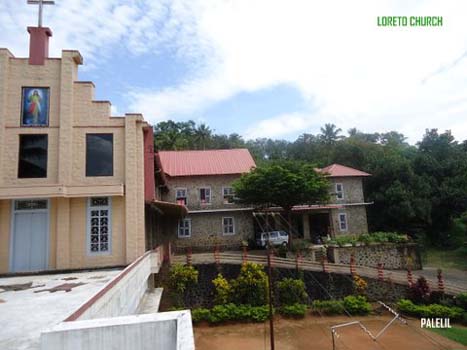

See all the attractions you’ll love in Arezzo.La Verna Centre of Spirituality & Hospitality Hikers and nature lovers will enjoy spending some time in this unspoilt part of Tuscany, surrounded by nature, trees and beautiful tranquillity.Īrezzo with its rich artistic heritage is 50 kms away. A benedictine monastery in the magnificent natural setting of the Foreste Casentinesi National Park. ⇒ Check out our 2 Day Road Trip to the Casentino, visiting Poppi and La Verna.Ĭamaldoli is the other religious ‘hot spot’ in the area. In Poppi you can visit the handsome and perfectly preserved Count Guidi Castle. The drive up to La Verna is spectacular, immersed in the beautiful forest. Francis died two years later, but this beautiful place is still filled with a sense of deep peace and spirituality. After a 40 day period of fasting and purification, his body was marked with the same signs of Christ’s own suffering on the Cross. The year 1224, when he is believed to have received the stigmata. Here in the peace and stillness of the forest, with only animals for company, he was able to spend long periods in contemplation and draw closer to God. When he arrived up there, a big flock of birds welcomed him, a divine sign that God was happy with this choice.Īfter this Saint Francis spent several periods of retreat on t his ‘holy mountain’.

“It’s a solitary and wild place, perfect for those looking for solitude and penance” that’s how the count described it to the saint, who was very happy to accept the gift. It was a certain Count Orlando who gave this mountain to Saint Francis in 1213. A bit of history – the origin of La Verna From this spot, protected by a balustrade, you can look out over a spectacular view of the whole valley. The rock opened itself forming a small nest where the saint found refuge. Here Count Orlando, who originally gifted the mountain to Francis, is buried.įor a breathtaking view and a taste of Saint Francis’ legendary life, you can walk to the precipice where the devil tried to kill Francis by throwing him into the abyss. It’s a simple, contemplative place space where pilgrims retire in silent prayer. The church is divided in two part, the oldest part is the one closer to the altar with a magnificent Della Robbia. This was the very fist building, used by Saint Francis himself after he had a vision of the Madonna. Next to the Basilica you can access the small Santa Maria degli Angeli church. At the end of the corridor you find some intimate chapels to visit. Half way along the corridor you can see a small door that leads to the stone where the Saint used to rest, surrounded by stones, trees and perfect silence, nestled in some huge rocks. The original was lost and new ones were created from the 17th to the 20th century. The Basilica – whose construction works started in 1348 but which weren’t completed until 1509 – is decorated with extraordinary examples of Della Robbia glazed terracottas, like the “Nativity” (Andrea) the splendid “Annunciation”.įrescoes tell stories from the life of St. The visit starts from the piazzale, called “ Quadrante“, where you can access all the buildings and enjoy a breathtaking panorama over the Casentino Valley.

This whole area of the Casentino has been a popular destination for religious tourism since the Middle Ages, a wonderful part of Tuscany where unspoilt nature and spirituality meet. It takes roughly two and a half hours by car from Florence, along a very scenic road. La Verna, considered to be one of Italy’s most important Franciscan monasteries, is located 50 kms from Arezzo, and 85 kms from Florence. Pilgrims come here from all over the world to visit this place which is imbued with the spirit of the saint. Surrounded by a thick forest of fir and beech tees, it’s built high up on a rocky outcrop on the ‘Saint Francis’ sacred mountain’. The religious complex has an impressive location atop Mount Penna, which is part of the Foreste Casentinesi National Park. La Verna is a famous Franciscan Sanctuary in Tuscany, central Italy.


 0 kommentar(er)
0 kommentar(er)
